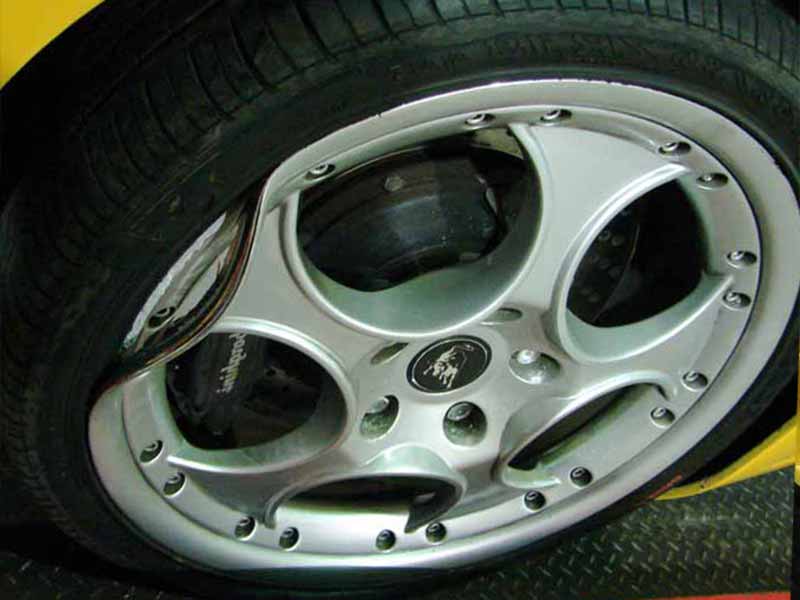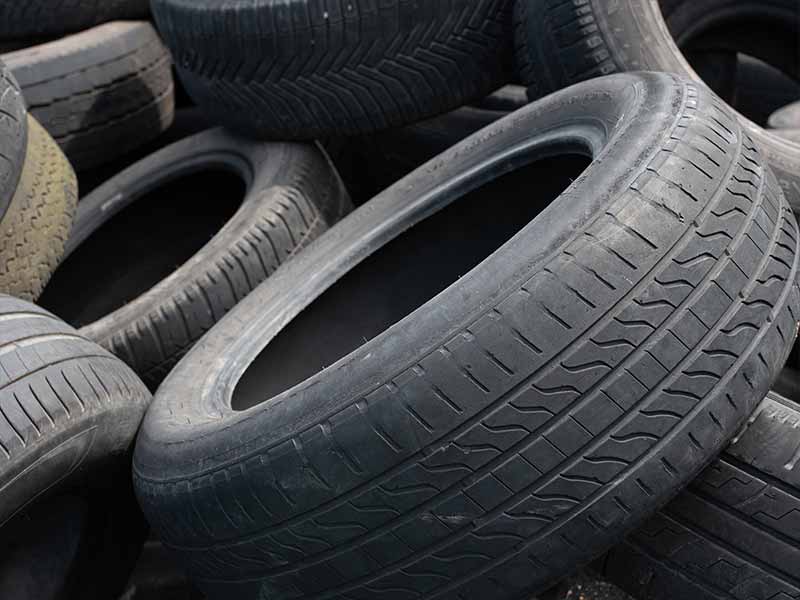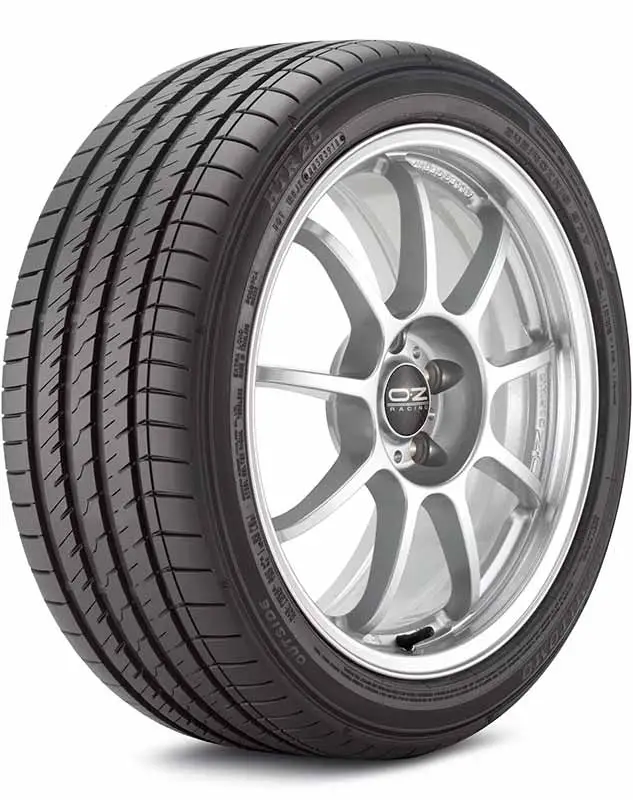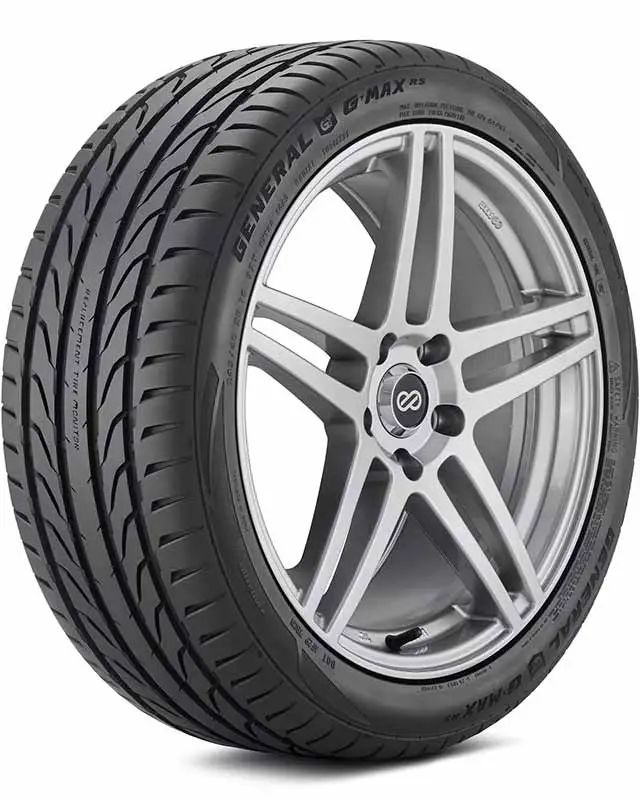Uneven tire wear is the result of many different types of problems. They can often be diagnosed by the uneven wear patterns on the tire tread or by vibrations and noise.
No matter the irregular tire wear symptom, there are only a few problems that can cause uneven tire tread wear.
Uneven Tire Wear Causes
To prevent and fix uneven tire wear, you should perform regular tire maintenance and keep an eye on the following issues that are the primary causes of tire wear problems:
- Wheel Alignment
- Worn Out Suspension Components
- Incorrect Air Pressure
- Damaged Wheels
- Driving Habits

Preventing uneven tire wear requires regular tire and wheel inspection and checking for improper tire inflation pressures.
It’s recommended that you check tire wear and pressures of your tires monthly. This is a bit more than some are willing to do so falling back to every 3 months or at a minimum 6 months can still help you spot irregular wear early and ensure your tires are wearing smoothly.
You should also rotate your tires every 5,000 miles and realign and rebalance every 10,000 miles.
Let’s take a closer look.
Improper Wheel Alignment
Wheel alignment issues are the cause of many irregular tire wear problems. Wheel alignment is important for ensuring that your car or truck tracks straight and true down the road.
As a part of regular maintenance, it is recommended that you have an alignment performed every 10,000 miles.
If a tire isn’t aligned properly, it basically gets dragged slightly as your vehicle travels and causes excessive wear on a portion of the contact patch depending on the incorrect tilt of the wheel and tire assemblies.
The suspension system for each wheel is adjusted to improve handling and stability. This means that the tires don’t actually sit perfectly straight at all angles. Slight adjustments to the angles make your vehicle easier and safer to drive.
Some minor uneven tire wear is normal. But more serious uneven wear problems can be the result of the alignment settings being too far out from the vehicle manufacturers’ specification.
There are 3 main alignment adjustments:
- Toe
- Camber
- Caster
Let’s discuss each of them so you understand how they work and the irregular tire tread wear patterns to keep an eye out for that indicate one of these alignment settings could be the cause of your uneven tire wear.
Toe Wear
When looking at your car or truck from the top, you can imagine toe as the front and rear tires being tilted inward or outward slightly. This is often referred to as pigeon-toed or duck-toed.
Toe-In
Toe-in or pigeon-toed is when the leading edge of the tires tilt inward toward each other. This is common with passenger vehicles and makes oversteer less likely, which makes control in emergency situations much easier and safer.
Too much toe-in can cause excessive inner edge wear.
Toe-Out
Toe-out or duck-toed is when the leading edge of the tires tilt outward away from each other. This is uncommon with passenger vehicles and makes oversteer more likely, which can be dangerous.
Toe-out can cause excessive inner edge wear.
Camber Wear
Camber is the tilt of your tires when viewed from the front or rear. If the top of the tires tilt inward toward the vehicle centerline, this is called negative camber. If the top of the tires tilt outward, away from the centerline of the vehicle, this is called positive camber.
Negative Camber
Slight negative camber is common, especially on the rear axle, to increase handling performance and reduce oversteer, making control in emergency situations easier, just like with toe-in.
Too much negative camber can cause excessive wear on the inner shoulder of your tires.
Positive Camber
Positive camber is uncommon and undesirable since it will reduce traction when cornering and cause excessive oversteer more easily which is more difficult to control.
Positive camber can cause excessive wear on the outer shoulder of your tires.
Caster
Caster refers to the angle of the pivot point of the suspension system. Caster doesn’t affect tire wear and will only be positive. Positive caster improves traction and handling. It also is what causes your steering to return to center if you release the steering wheel while driving.
You should never have negative caster. Adjustments are only made to how much positive caster there is tuned into the suspension system.
Again, caster doesn’t affect tire wear, but it is one of the three alignment adjustments and does affect handling.
Damaged Or Worn Suspension Components
Worn out suspension components or bent or somehow damaged suspension elements can cause alignment to fall out of the manufacturers’ specified settings.
Worn ball joints for the upper and lower control arms are a common source of alignment problems and uneven tire wear on older cars and trucks. The play in the bushings of these joints builds over time and creates slop in the suspension system.
Shocks or struts also begin to fail at higher mileages and can lead to alignment problems.
It’s important to inspect your suspension system components as your vehicle gets older to catch suspension problems before they become serious.
Incorrect Tire Pressure
Maintaining proper tire pressure is a common source of uneven tire wear. Tire pressure should be checked monthly with a tire pressure gauge. If this can’t be managed, every six months is a realistic minimum to address seasonal fluctuations.
Tire pressure recommendations can be found on the tire information sticker in the driver’s door jamb or owner’s manual.
Many vehicle owners rely on their tire pressure monitoring system (TPMS) to alert them when the air pressure in their tires is too low. Unfortunately, TPMS usually only alerts when the pressure in your tires is 25% too low. This is a significant amount and can lead to excess wear on the inner and outer edges of the contact patch.
Under Inflated Tires
Underinflated tires wear more on the outer edges or shoulders of the tire. The low tire pressure can’t force the middle of the tire’s tread out properly and the stiffer sidewalls support the tire more than the middle of the contact patch.
Over Inflated Tires
Over inflated tires wear unevenly because the center of the tire tread balloons outward and the tires ride on the middle of the tires creating excessive center wear.

Out Of Balance Wheels And Tires
Proper balance of your tires is important to ensure even tire tread wear over time. It’s difficult to balance wheels and tires perfectly. There will always be a slight bit of imbalance which is more noticeable at higher speeds.
To get the most accurately balanced wheel and tire assemblies you should use a tire shop that has a road force balancer. Road force balancers apply pressure to the tires similar to the weight of your car or truck to mimic the real-world characteristics as the wheel and tire spin.
Tire Assembly Balance
Irregular tire wear can be caused by tires that are not properly balanced. Rebalancing your tires every 10,000 miles is recommended because tires fall out of balance over time. Lost wheel weights, bent rims, or damaged tires can cause irregular tire wear.
Damaged Wheels
Damage from potholes and curb strikes can cause unbalanced wheels that will slightly bounce as they spin. This bouncing due to imbalance will cause uneven wear at a diagonal angle across the width of the tire tread. This uneven tire wear pattern is called cupping wear.

Aggressive Driving Habits
It should come as no surprise that your driving style has a lot to do with how evenly or unevenly your tires will wear.
Aggressive driving will exaggerate wear on the outer front tire shoulders and inner rear tire tread wear. Making a conscious effort to reduce aggressive driving habits can make a big difference in the inner or outer edges of your tires wear over time.
Sports cars tend to have more aggressive suspension geometries that will wear more unevenly even with a proper wheel alignment. Aggressive driving habits will exaggerate this even further, significantly shortening the life of tires that will already have shortened lifespans.
Resources
Below are some links you may find helpful when learning about tires
- Tire wear patterns: What can cause uneven tire wear? – Allstate
- Tire tread wear and causes – Bridgestone
Final Thoughts
Regular tire maintenance is critical to prevent uneven tire wear. Tire rotation every 5,000 miles is important for ensuring each tire experiences the wear patterns of each position around your vehicle.
Good luck and happy motoring.




